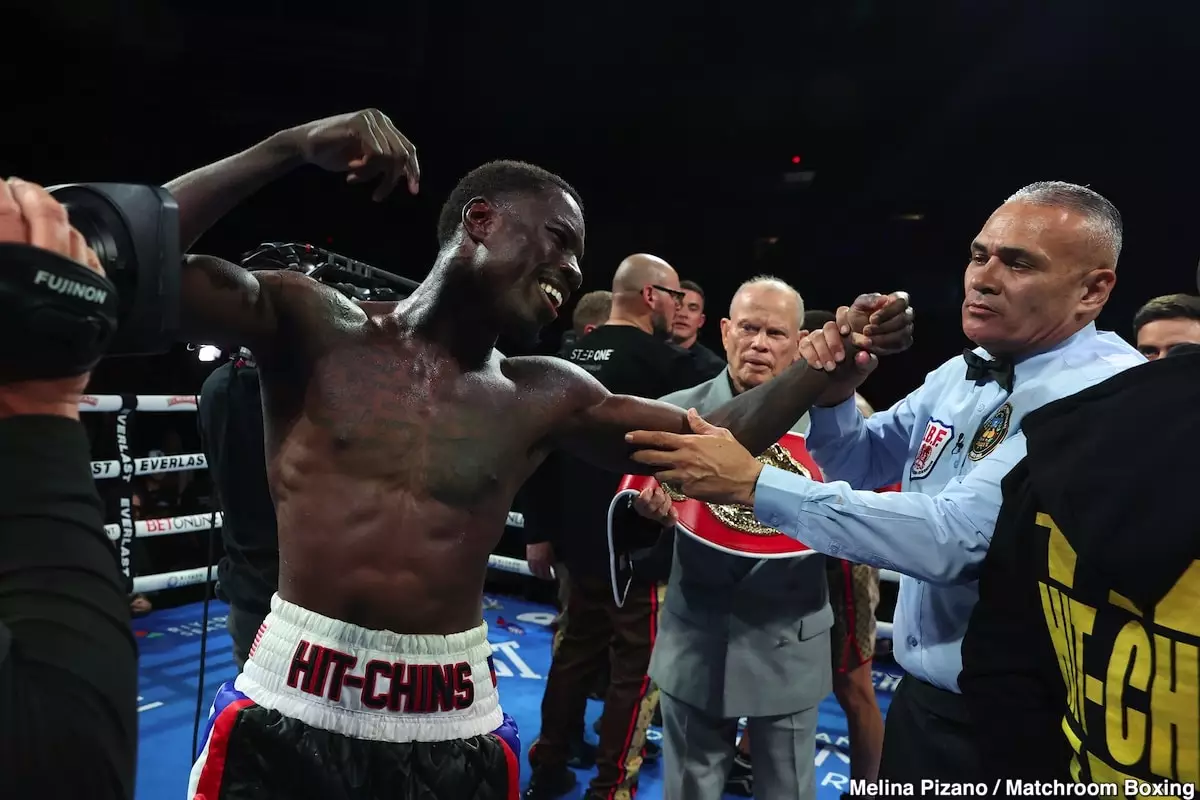Richardson Hitchins, a rising star in the boxing world, recently made headlines by seizing the IBF light welterweight title from Liam Paro with a gritty performance that earned him a split decision victory. While the fight showcased Hitchins’ technical prowess and adaptability in the ring, it also set the stage for various challenges as he aims to secure high-profile matchups that could elevate his career further. But will the road to these opportunities be as straightforward as promoter Eddie Hearn hopes?
Taking place at Coliseo Roberto Clemente in San Juan, Puerto Rico, the bout featured an unexpected back-and-forth dynamic. Paro entered the match with an impressive record, but Hitchins’ intelligence and timing allowed him to dominate the later rounds. The fight began with both boxers feeling each other out, but by the fifth round, Hitchins took control, capitalizing on Paro’s reluctance to engage as frequently. The judges’ scorecards revealed a stark contrast in how the fight was perceived—117-111 in favor of Paro from one judge, while the others saw Hitchins victorious at 116-112. This discrepancy raises questions about the accountability and judgment of those responsible for scoring a title match, which is crucial for the integrity of the sport.
With the title now in Hitchins’ possession, one might assume that the landscape of potential matchups will become more favorable. Hearn emphasized this notion, claiming that opponents would now have more reason to fight Hitchins, as they would be vying for a championship. However, the reality is likely to be more complicated. The boxing community is known for its reluctance to face skilled fighters who present a high risk with low reward; Hitchins fits this mold perfectly. His style, likened to that of Shakur Stevenson, presents challenges for many top contenders like Ryan Garcia, Devin Haney, and Teofimo Lopez, all of whom Hearn hopes to match against Hitchins. The prospect of facing an adept technical fighter can deter many from engaging in the ring.
Hitchins himself addressed the complexities of exposing opponents to his refined skill set. After the fight, he reflected on Paro’s unexpectedly crafty style, signifying a mutual respect between fighters while acknowledging the inherent difficulties of competing against someone who can quickly adjust and adapt in the ring. This recognition speaks volumes about the mental aspect of boxing; fighters know that by stepping into the ring with Hitchins, they might have to face an uphill battle that could jeopardize their own careers. Hitchins’ victory presents an interesting dilemma: while he now possesses the title, he may simultaneously inherit the title of the ‘avoided boxer.’
In the landscape of modern boxing, promoters play a pivotal role in shaping a fighter’s journey. Eddie Hearn has successfully positioned Hitchins in a way that has brought him opportunities and exposure. However, as noted, his lukewarm reaction to Hitchins’ win hints at Hearn’s realization that generating significant interest for top-tier opponents may continue to pose a challenge. While Hearn fervently believes that having the championship belt will attract the right fights, the historical trend of fighters avoiding those they deem problematic cannot be overlooked.
The post-fight atmosphere saw Teofimo Lopez making noise about a potential matchup with Hitchins, claiming to already have his legal team on board. Yet, one must question Lopez’s intentions; is this a genuine desire to face a formidable opponent, or merely a publicity stunt to keep his name circulating in the boxing sphere? Since his loss to George Kambosos Jr., Lopez’s reputation has taken a hit, leading many to speculate if he fully possesses the ambition to reclaim his status as a prominent fighter.
As Richardson Hitchins continues to navigate his career post-title win, it becomes evident that the path ahead is riddled with obstacles. While he may hold a recognized title, the evasion of top talent and the need for strategic matchmaking will play critical roles in shaping his future. It is crucial for all involved—Hitchins, Hearn, and potential opponents—to engage in transparent discussions that allow for growth and opportunity in the sport. The journey is not merely about holding a championship belt; it is about pursuing meaningful bouts that challenge and define a boxer’s career legacy. As the narrative unfolds, it remains to be seen how Hitchins will solidify his standing in a sport resistant to change.

